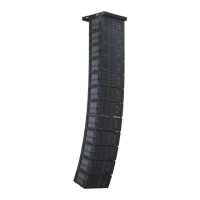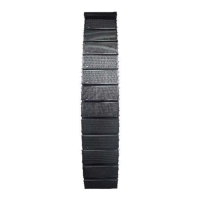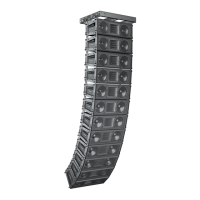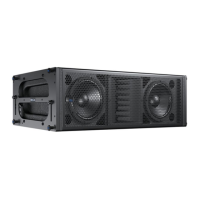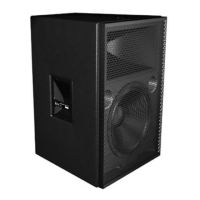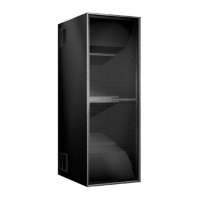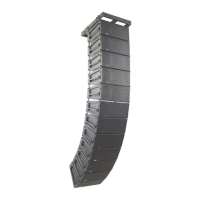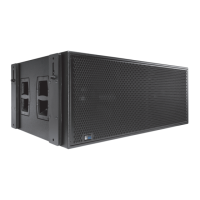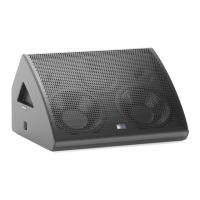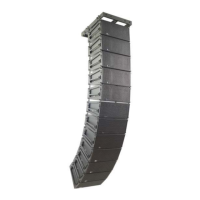18
CHAPTER 5
The block diagram (Figure 5.3) shows one method of driving
this example array, along with subwoofers (not in the MAPP
Online predictions).
Equalizers for each zone, as well as digital delays, provide a
time adjustment to compensate for the various sub-systems
if they are geometrically out of plane.
CAUTION: This example is not meant to
be used as a template for your own system
designs. Acoustical characteristics, physical
constraints, audio content, audience, and other
relevant factors should always be uniquely weighed
into your own applications on a per-project basis.
USING MICA AS SIDEFILL OR DOWNFILL WITH
MILO CURVILINEAR ARRAYS
MICA’s acoustical characteristics promote seamless
integration with MILO when used as downfill in MILO
curvilinear arrays (via the MTF-MILO/MICA transition grid),
as well as when MICA arrays are being used as sidefills
along with MILO main arrays. Understanding the differences
and similarities between the two loudspeakers is very
important for designing and for fine-tuning system coverage.
For a combined MILO/MICA array the design will be
dependent on three factors:
■ Number and Type of Array Elements. Determining the
number of elements of each type to use is critical: The
number of elements drastically affects the uniformity
of coverage of both SPL and frequency response. The
number of long-throw elements (MILO) and downfill
(MICA) needs to be carefully selected.
■ Vertical Splay Angles. Changing the splay angles
between cabinets has a significant impact on vertical
coverage, with the result that narrower vertical splay
angles produce a higher Q vertical beamwidth and
longer throw in the top elements (MILO), while wider
splay lowers the Q at high frequencies for coverage on
the lower elements (MICA).
■ Horizontal Coverage. Horizontal coverage needs to be
divided in two sections. The top section is covered by
MILO (90 degrees for MILO and/or 60 degrees for MILO
60) and the lower section is covered by MICA (100
degrees). The horizontal coverage of these two sections
can be considered fairly constant, depending on the
particular loudspeaker enclosure covering each area of
the venue, regardless of the number of array elements
on each section or the angles between them.
Figure 5.3. Sample block diagram of MICA array
Digital Delay
2 In x 6 Out
Digital Delay/EQ
LD-3
Channel A
IN SUB OUT
CH 1 OUT
CH 2 OUT
CH 3 OUT
Channel B
IN SUB OUT
CH 1 OUT
CH 2 OUT
CH 3 OUT
Channel A
INSERTS SENDS
IN SUB OUT
Full Range
IN CH 1 OUT
Post Array
IN CH 2 OUT
Post Array
IN CH 3
Post HPF
Channel B
INSERTS SENDS
IN SUB OUT
Full Range
IN CH 1 OUT
Post Array
IN CH 2 OUT
Post Array
IN CH 3
Post HPF
Main
Left
Main
Right
Optional
Subwoofer
Mono
(6) 700-HP (6) 700-HP
(12) MICA (12) MICA
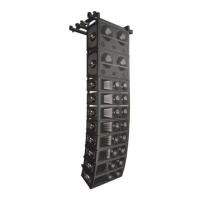
